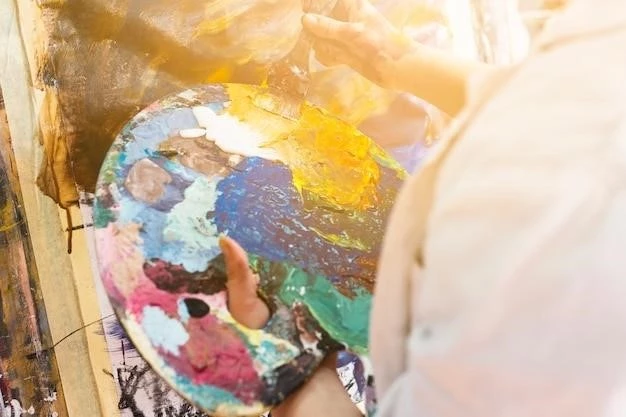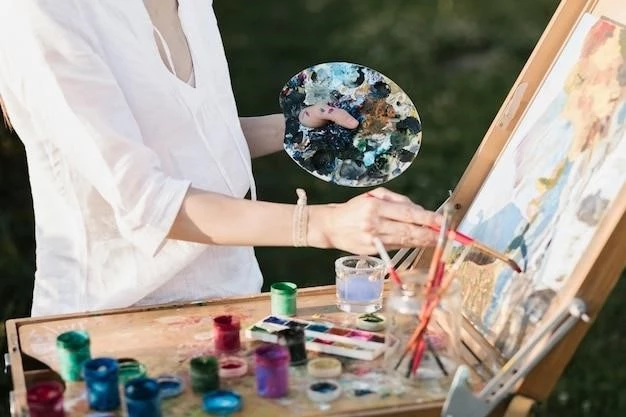Art and Culture: A Global Perspective
Art and culture are inextricably intertwined, each shaping and reflecting the other in a vibrant tapestry of human expression. Art, in its myriad forms, serves as a powerful lens through which we can understand different cultures, beliefs, and values across the globe. This article delves into the intricate relationship between art and culture, exploring how artistic movements have transcended geographical boundaries, fostering cross-cultural dialogue and shaping our understanding of the world.
The Universal Language of Art
From the ancient cave paintings of Lascaux to the contemporary installations of today, art has always served as a universal language, transcending linguistic and cultural barriers. A single work of art can evoke a spectrum of emotions, spark dialogue, and foster connections between individuals who may not otherwise find common ground. Consider the serene beauty of a Japanese ink painting, the intricate details of an Indian rangoli, or the raw power of a West African mask; each piece, imbued with its own cultural significance, possesses the power to resonate with viewers on a deeply personal level.

Cultural Identity and Artistic Expression
Art plays a pivotal role in shaping and preserving cultural identity. Traditional art forms, passed down through generations, embody the history, beliefs, and values of a community. For instance, the vibrant textiles of Guatemala, woven with intricate patterns and symbols, tell stories of Mayan heritage and connect contemporary communities to their ancestral past. Similarly, the dynamic rhythms and movements of flamenco dance in Spain express the passion, pride, and resilience of the Andalusian people.
Beyond traditional forms, contemporary artists often draw inspiration from their cultural backgrounds, addressing social issues, challenging norms, and offering unique perspectives on the world. The works of Frida Kahlo, for example, celebrated Mexicanidad, exploring themes of identity, gender, and the female experience through a distinctly Mexican lens. Similarly, the vibrant street art of Brazil, often infused with political and social commentary, reflects the country’s complex history and dynamic cultural landscape.
Global Exchange and Artistic Evolution
Throughout history, the exchange of ideas and artistic practices between cultures has been a driving force behind artistic innovation and evolution. The Silk Road, for example, facilitated the transmission of artistic styles, techniques, and materials between East and West, leaving an indelible mark on the art of both regions. The influence of Japanese woodblock prints on Impressionist and Post-Impressionist painters in Europe is another compelling example of cross-cultural exchange shaping artistic movements.
In today’s interconnected world, the flow of artistic ideas and influences is more dynamic than ever before. Artists from all corners of the globe draw inspiration from diverse sources, blending traditional techniques with contemporary mediums and concepts to create truly global art forms. The internet and social media platforms have further democratized the art world, providing unprecedented access to a diverse range of artistic expressions and fostering cross-cultural dialogue among artists and art enthusiasts alike.
Art as a Catalyst for Social Change
Art possesses the power to challenge perspectives, provoke dialogue, and inspire social change. Throughout history, artists have used their voices and creative platforms to address social injustices, advocate for equality, and raise awareness about critical issues. The powerful murals of the Chicano Movement in the United States, for instance, gave a visual voice to the struggle for Mexican-American civil rights, while the politically charged works of Ai Weiwei continue to challenge censorship and advocate for human rights in China.
Art can also serve as a tool for reconciliation and healing in post-conflict societies. By providing a platform for diverse voices and perspectives, art can help communities process trauma, rebuild trust, and foster understanding. The murals of Northern Ireland, for example, have become powerful symbols of peace and reconciliation, transforming spaces once marred by conflict into canvases for hope and dialogue.
Preserving Cultural Heritage in a Globalized World
In an increasingly globalized world, the preservation of cultural heritage through art is paramount. As traditional art forms face challenges from modernization, migration, and cultural homogenization, it is essential to support initiatives that document, preserve, and revitalize these invaluable expressions of cultural identity. Museums, cultural institutions, and educational programs play a vital role in this endeavor, ensuring that future generations can connect with and learn from the rich artistic traditions of the past.

Conclusion: Embracing the Diversity of Human Expression
Art and culture are inseparable, each enriching and informing the other in a vibrant tapestry of human expression. By embracing the diversity of artistic traditions across the globe, we gain a deeper understanding of different cultures, challenge our own perspectives, and celebrate the shared humanity that connects us all. As we move forward in an increasingly interconnected world, it is essential to foster cross-cultural dialogue through art, promoting understanding, empathy, and appreciation for the rich tapestry of human creativity that enriches our world.










